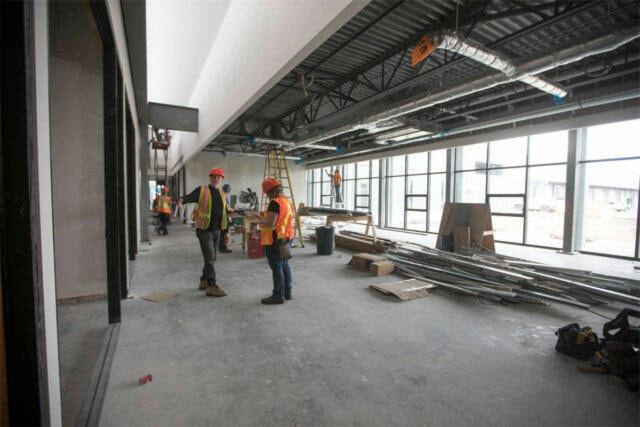Across the territory, as soon as Yukoners get respite from this summer’s bumper swarm of mosquitoes, one topic comes up. Behind RV screen doors, in bug tents, on speeding boats, perched on windy outcrops above campsites, Yukoners debate whether higher interest rates are going to choke our housing sector.
Higher interest rates are a wet blanket across the entire industry, from homeowners to home builders to companies that want to build new commercial or residential buildings.
According to Ratehub.ca, the average discounted five-year mortgage rate — that’s the rate people actually pay rather than the posted rate — was as low as 1.39 per cent in January 2021. As of July 21, it was 4.34 per cent.
On a $500,000 mortgage, that increase equates to $750 per month in extra payments.
The latest Yukon house price statistics are from March, and that means they are out of date in today’s rapidly changing market. March was before a succession of wild inflation reports prompted central banks to recalibrate their interest rate plans. On July 13, the Bank of Canada raised rates by one percentage point, its largest one-time rate increase since the 20th century.
But we do have much more recent data on the construction side of the market thanks to Yukon Bureau of Statistics data on building permits. Construction is a bigger part of the economy here than in most other places. The sector represents 9.0 per cent of the Yukon’s economy versus 7.6 per cent nationally, and Canada has a bigger construction sector than most countries thanks to our real estate boom.
The Yukon construction sector is less focused on housing than in the rest of Canada. Residential housing has to compete for skilled workers with the government sector’s big-dollar building programs. Housing construction was 28 percent of total construction activity in the Yukon. Nationally, it was 11 points higher at 39 percent.
Economists watch building permits closely, because they influence both future house prices as well as jobs in the construction and materials sectors. The Yukon recorded 2,713 residential building permits in the first six months of 2022. That’s down from 2,836 in 2021 and 2,894 in 2019, prior to the pandemic. However, the value of the projects being built is up dramatically.
In 2019, the building permits for the first half of the year totalled $85.4 million in construction activity. In 2022, that figure was $133 million, up over 50 per cent. June 2022 was a particularly big month. The value of building permits issued in just that month was $85.6 million, exceeding the value for the entire first half of 2019.
The value per permit is also significantly higher for the first half of 2022. This suggests a bigger mix of new buildings versus renovations, and larger projects versus smaller ones.
At first glance, all this suggests the building boom continues. The Bank of Canada started raising interest rates in March 2022, and by June the newspapers were filled with stories about inflation and the prospect for higher rates. Builders submitted record building permit applications anyway.
However, there may be other explanations for that huge June 2022 number. It may include one or two huge apartment or condo projects. Construction costs have gone up substantially, so the dollar amount of building permits will have gone up more than the square footage being built. There may be a momentum factor: if you bought land, paid for an architect and ordered materials in the spring, you will probably go ahead with your project despite rising rates.
Some builders may also have pre-approved loans at lower rates. They may need to pull the trigger on their projects now, rather than risk getting a much higher rate after their pre-approval expires.
There is too much uncertainty to make firm predictions on how all this will play out. It is possible higher interest rates will cause a slowdown in Yukon housing construction. But it is also possible our rising population — thanks to our growing transfer payment and number of government jobs — will keep the industry humming along.
For contractors, it means it is worth thinking about how to lock in today’s high hourly pay rates in long term contracts with clients who want to build. This, of course, is one reason why big government contracts are so attractive. The Yukon government will keep spending on big buildings even if the new-house sector takes a dip.
For people building, it suggests there may be some respite from high contractor rates and scarce tradespeople later in the year. But this is by no means a sure thing.
This uncertainty means Yukoners will still be debating our housing sector as fall frosts put an end to the mosquito menace.
Keith Halliday is a Yukon economist, author of the Aurore of the Yukon youth adventure novels and co-host of the Klondike Gold Rush History podcast. He is a Ma Murray award-winner for best columnist.
